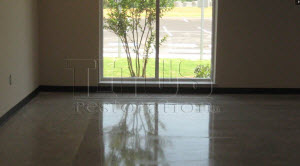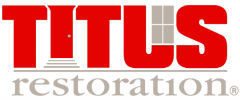 Concrete polishing is not the right answer for every floor, nor are concrete coatings the right solution for every floor. So how to decide which solution is the best for your concrete floor? For considerations in large retail stores (big box or grocery), large commercial facilities (automotive service center), warehouses, or industrial facilities, it is usually important to make the most cost effective choice. Here are some of the decision making factors to consider between painting and polishing concrete:
Concrete polishing is not the right answer for every floor, nor are concrete coatings the right solution for every floor. So how to decide which solution is the best for your concrete floor? For considerations in large retail stores (big box or grocery), large commercial facilities (automotive service center), warehouses, or industrial facilities, it is usually important to make the most cost effective choice. Here are some of the decision making factors to consider between painting and polishing concrete:
Maintenance
To choose the right floor finish, one factor is the level of maintenance required for a particular facility. For example, a grocery store has a higher need for appearance of cleanliness than a warehouse. A plant that manufactures electronic components has different flooring needs than a facility that machines metal parts for the automotive industry. The electronics company may need dust proofing and ease of cleaning, and the parts machining company may need oil resistance and high traction. An aircraft hangar may benefit from a highly reflective solid color floor so that any small dropped part can be easily located.
A floor that is exposed to contaminants (oil, water, spills, etc.) is more prone to slips, trips, and falls than one that does not have that exposure. Stores open to the public and commercial facilities that have employees must be conscious of the floor condition and choose high traction flooring solutions that are easily maintained. According to the National Floor Safety Institute, injuries from slips and falls cost the United States approximately $80 billion per year.
One source of certified high traction flooring systems and products is the National Floor Safety Institute (NFSI). Presently, this standard is the preeminently recognized standard in the United States that measures the “in situ” (in place) static coefficient of friction (SCOF) of wet, hard surface flooring. The NFSI also trains and certifies walkway auditors to measure the SCOF and DCOF of walking surfaces. This list of walkway auditors is available on their website at NFSI.org.
When the ease of cleanliness conflicts with slip resistance, the choice between hard surface flooring becomes more difficult to make. Should the customer paint the floor and add a slip-resistant aggregate? If this is done, cleaning the floor becomes more difficult, and an oil contaminated floor will still be slippery. Successfully recoating grease- or oil-soaked floors is almost impossible. Perhaps the right answer lies elsewhere.
Although it seems counterintuitive, for some clients with perpetual slip and fall conditions on their floors, the answer may lie in changing the required footwear of their employees and polishing the concrete floors so it is easily cleaned and coating failure is never again a problem. Walmart, Shoes for Crews, Georgia Boots, Carhartt, Red Wing, and many other companies offer slip-resistant footwear. Look for the words “Oil Resistant” and “Slip Resistant” both stamped on the bottom of the soles of the shoes or work boots.
Life Cycle Cost
One of the most important things to consider when choosing a finish for your concrete floor is life cycle cost. Life cycle cost takes into consideration factors such as the initial cost of installation, the cost of maintenance, and the estimate life of the floor finish. The mathematical formula looks like this:
LIFE CYCLE COST =
(INITIAL COST + ANNUAL MAINTENANCE) X YEARS OF LIFE EXPECTANCY
_________________________________________________________
YEARS OF LIFE EXPECTANCY
Chemical Exposure
The truth about polished concrete is that it has little added chemical resistance. In most cases, anything slightly acidic (like pickle juice or soda) or anything mildly caustic (such as cleaning detergents) can dull the shine or etch the concrete.
Polished concrete is more resistant to heavy oils than light oils or light solvents. Where dirty engine oil may not leave a stain, hydraulic or brake fluid spilled on polished concrete may leave a stain if it’s not cleaned up quickly. The cleanup time may be five minutes or five hours; it depends on the concrete and the quality of the polishing job. This means that part of the maintenance process for polished concrete must include a method of quickly cleaning oil spills on polished concrete. The good news is that an oil spill will not damage the concrete itself.
On the other hand, acids will damage the polished concrete. Hydrochloric acid etches and damages concrete. It was used for years by painters to etch the concrete, open its pores, and prepare the concrete for painting. However, when concrete is polished, the pores are closed more tightly by the diamond polishing process. Subsequent etching by mildly acidic liquids spilled on the floor, such as vinegar, pickle juice, or orange juice can dull the floor. This means that part of the maintenance process for polished concrete must include a method of quickly neutralizing and cleaning acidic spills on polished concrete.
Our free e-book addresses the choice between the hard surface floor finishes of polished concrete and floor coatings for concrete. It explores the very basic principles of coatings and the concrete polishing process. This download is full of pictures and videos which explain the principles behind both coatings and polishing, and to help you make the best choice for your property’s floors. Simply fill out our free e-book form; you will be a concrete floor polishing expert in no time.
